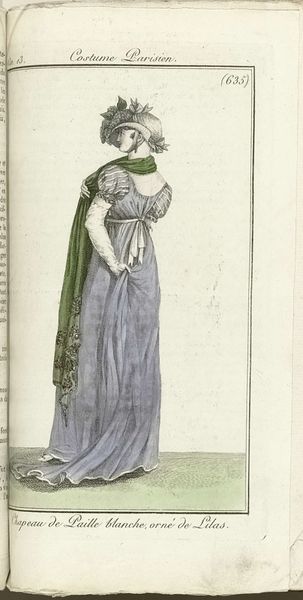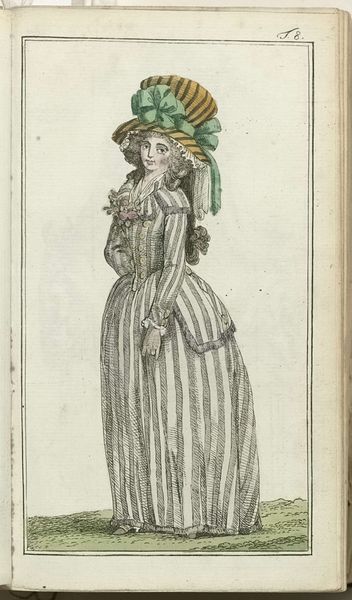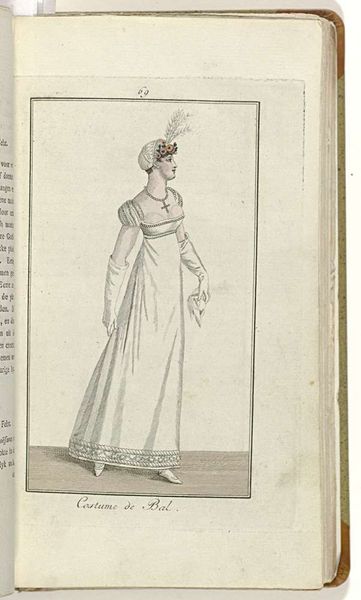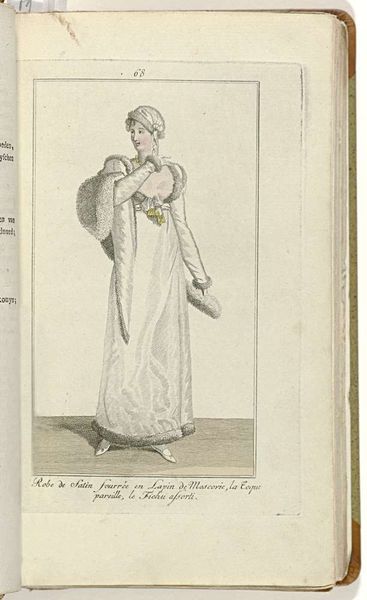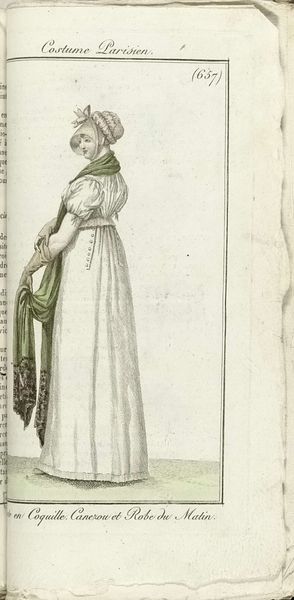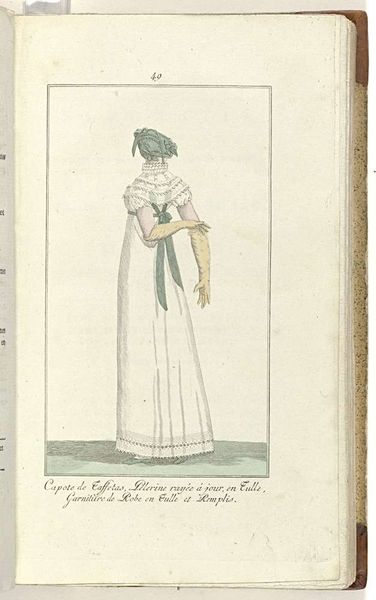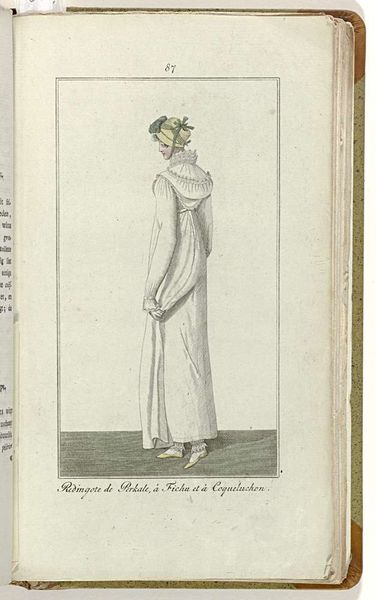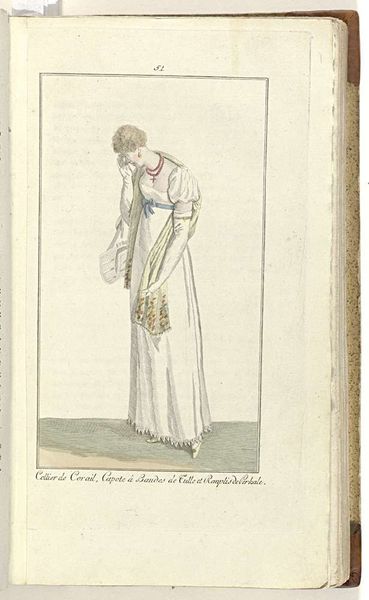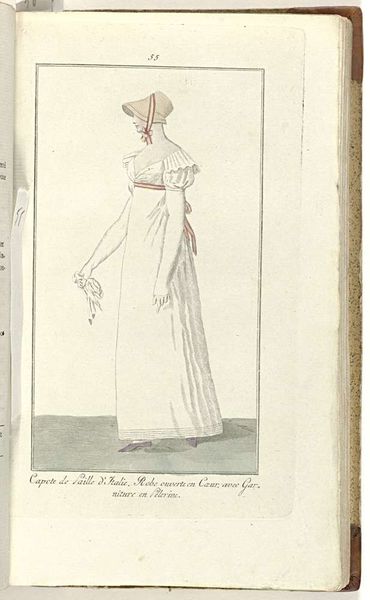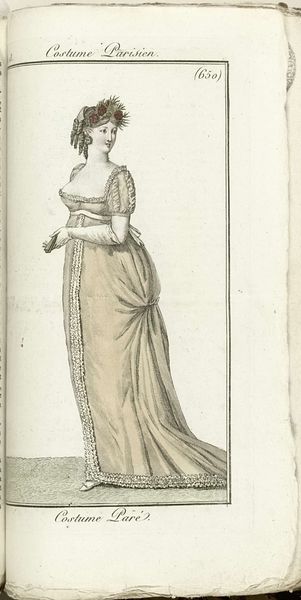
Elegantia, of tijdschrift van mode, luxe en smaak voor dames, Juli 1808, No. 52: Cornette de Mousseline brodée... 1808
0:00
0:00
drawing, watercolor
#
portrait
#
drawing
#
watercolor
#
romanticism
#
watercolour illustration
#
watercolor
Dimensions: height 200 mm, width 120 mm
Copyright: Rijks Museum: Open Domain
This fashion plate, made in July 1808, is an example of a print from Elegantia, a journal dedicated to fashion, luxury, and taste for women. The print depicts a woman wearing a muslin bonnet, or 'cornette', embroidered with delicate needlework. Her dress is made of 'toile de Jouy', a cotton fabric printed with intricate designs. The production of textiles like these relied on global trade networks and labor, from the cotton fields to the print workshops. The artistry lies in the skilled craftsmanship and the ways in which these materials were transformed into objects of desire. Embroidery, in particular, was seen as a feminine accomplishment, but it also provided income for many women. The fashion plate suggests that the clothing is an art form that intertwines skill, gender, and commerce. It underscores the amount of work that went into the production process. Recognizing this challenges traditional distinctions between fine art and craft, revealing the cultural significance embedded in everyday objects.
Comments
No comments
Be the first to comment and join the conversation on the ultimate creative platform.
